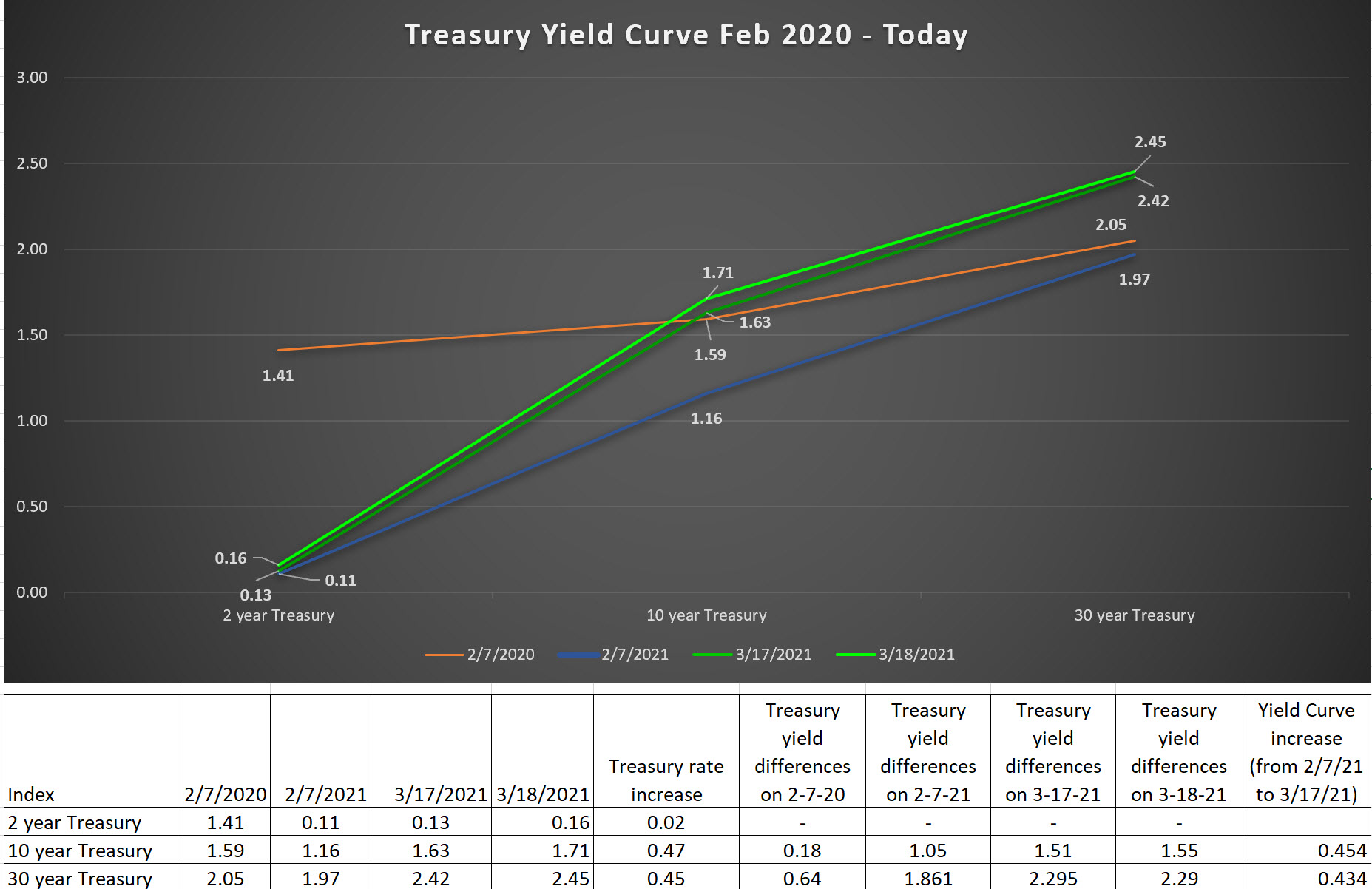CRE Owners & Investors Pay Attention! The Yield Curve Has Steepened.
By: Chuck Cronin
3/18/21

We wrote an article on February 7th, 2021 that spoke about the yield curve. On February 7th, 2021, the yield curve between the 2-Year Treasury and the 10-Year Treasury, and the 2-Year Treasury and the 30-Year Treasury, was the steepest it has been in four years. We suggested that the yield curve was predicting higher interest rates. Since February 7th, the 10-Year Treasury rate has gone up from 1.16% to 1.71% as of today, March 18th, 2021, further steepening the yield curve between the 2-Year Treasury and the 10-Year Treasury and the 2-Year Treasury and the 30-Year Treasury.
While not always correct, the yield curve often indicates the potential direction interest rates may be headed. On the graph in the linked article, you can see where Treasuries were and where the yield curve indexes were on those dates. Yesterday, the Fed announced they are keeping short term interest rates low through at least 2023. When one looks at the yield curve today, the difference between the 2-Year Treasury and the 10-Year Treasury is 155 basis points (100 basis points =1%), and the difference between the 2-Year Treasury and the 30-Year Treasury is 229 basis points. This is reflected in the chart to the farthest right in the linked article. In a normal healthy economy, the typical difference between the 2-Year and 10-Year rates is 150 basis points, and the typical difference between the 2-Year and the 30-Year rates ranges between 210-230 basis points.
So, what could this mean for the future? Historically, the yield curve has provided great insight as to what rates will do in the future. While short term rates could move up and the yield curve could change, the Fed, who controls short term rates, publicly announced yesterday they will anchor the Fed Fund Rate at a low point until at least 2023. Should you move now? Should you wait? Looking at the current yield curve as compared with the historic shape says, “don’t panic”. If the Fed keeps the short-term rates low, the yield curve would have to steepen dramatically past its historical averages for rates to rise sharply in the near term. However, it is always prudent to stay ready and vigilant – anything can happen. Closely watching the shape of the yield curve, as compared to history will help provide clarity for these important decisions.
For more historical rate information and insights into the rate environment please visit our website at www.axiom-capital.com and as always, if you have any questions or want to discuss further do not hesitate to contact us at (518) 472-4000 or at axiom@axiom-capital.com.
